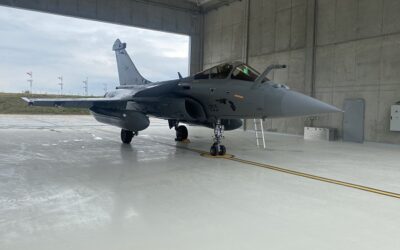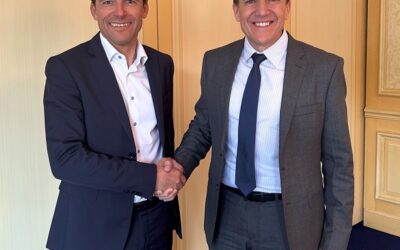Major Indigenous Development Projects
As a leading regional power, one now facing major challenges and undergoing significant transformation, Turkey has an absolute need for effective, deterrent military power proportionate to the risks and threats to which it is exposed, in order to maintain its existence and preserve its stability and national interests. This articlecan be read in its full version in MILITARY TECHNOLOGY #5/2017, available at IDEF 2017 or here.
Although considerably reduced since the bloody coup attempted by the Fetullahist Terrorist Organisation (FETO) on 15 July 2016, the Turkish Armed Forces (TAF) are still among the largest in the world.
As part of the restructuring efforts that were launched following the coup attempt, the Chief of the Turkish General Staff (TGS) now reports directly to the Presidency; Land, Naval and Air Force Commands were brought under the control of the MoND: Service commanders will report directly to Defence Minister Fikri Isik. Military factories and shipyards have brought under MoND control, while war colleges, military high schools and NCO high schools were closed down. The military academies for all three services, together with NCO vocational high schools, were retained but brought into the aegis of the National Defence University established under the MoND.
On 17 March, Minister Isik announced that 6,511 TAF personnel had been for connections to FETO and a total of 16,409 personnel have lost their military student status. On 2 April, the Minister of the Interior, Süleyman Soylu, stated that 7,463 soldiers and 168 generals had been detained for the same reason.
At the same time, a process of relocating military bases from city centres to the outskirts has been initiated. All military barracks in Istanbul and Ankara from which participants in the failed coup emerged have been closed down.
Defence Expenditures and Budgets
Turkey is spending over U$5 billion annually to meet the modernisation requirements of its security forces and to maintain and improve TAF combat capabilities well into the future. An additional $3-4 billion is spent annually on MRO of weapon systems, platforms and equipment. The MoND’s 2017 budget allocation is TL28,702.119 billion (around $9.12 billion based on predicted 2017 exchange rates); the TGGC budget is around TL9,374 billion, the TCGC budget is TL649.7 million and the SGD budget around TL23,538 billion. Turkey’s combined defence and security budget is therefore around TL64,360 billion – some $20,43 billion.
Of the total MoND budget, 51.5% is allocated to personnel expenditure, 8.8% for social security premiums, 37.4% for property/goods and service purchases, 1.5% for current transfer expenditure and around 0.8% for capital expenditure. The majority of the TAF’s on-going modernisation programmes managed by the the Undersecretariat for Defence Industries (SSM) are being financed from sources transferred from the Defence Industry Support Fund (DISF), an extra budgetary financial resource for defence procurement that is totally independent of the MoND budget and is one of the most important financial resources for providing long-term funding for SSM’s on-going defence and security programmes. Until November 2011, the DISF had been used by the SSM only for military purchases, but with amendments made in 2011 and 2014 the fund is now also available for financing the urgent intelligence- and security-related requirements of the National Intelligence Service (MIT) and the SGD.
A Self-Sufficient Defence Industry is a Necessity
As a result of this progress the defence and aerospace industry has turned out to be a significant manufacturer of state-of-the-art, NATO-standard compliant, cost-effective systems and equipment in recent years. ANKA, BAYRAKTAR TB2, TB2-S (armed) and KARAYEL UAS, the Turkish MBT ALTAY, the National Corvette MILGEM, National Attack Helicopter T129 ATAK, Training Aircraft HURKUS, low- and medium-altitude air defence missile systems HISAR-A and HISAR-O, the Long Range Anti-Tank Missile MIZRAK-U/UMTAS and the Medium Range Anti-Tank Missile MIZRAK-O/OMTAS, the Laser Guided Missile CIRIT, Tactical Ballistic Missile BORA (export version named as KHAN), the new generation air-to-ground cruise missiles SOM-A/B and SOM-J, 533mm Heavy Weight Torpedo AKYA, ATMACA Anti-ship and Land Attack Missile, GökTürk-I/II EO Satellites, simulation systems, and the national infantry rifle MPT-76, already entering service with the TAF, are just some of the products developed indigenously in recent years.
Major Indigenous Development Projects for TAF Modernisation
The 7.62mm MPT-76 National Infantry Rifle was developed local under the Modern Infantry Rifle Project and the first batch of 200 delivered to Turkish Army units in May 2014. In January 2017, the army took delivery of the first batch of 500 serial-produced MPT-76s manufactured by the state-owned Machines and Chemical Industries Board (MKEK) under a serial production contract for 20,000 awarded in July 2015. In December 2016 SSM awarded another contract to KaleKalip, which co-designed the weapon, for the serial production of a further 15,014 and in February 2017 a third contract for 10,000 more was awarded to Sarsilmaz.
The ALTAY Turkish National MBT is a 3rd Generation+ MBT developed by prime contractor Otokar in cooperation with its local partners (Aselsan, MKEK, Roketsa,n and STM) and South Korean Hyundai/Rotem, which was selected as the Technical Support and Assistance Provider to meet Turkish Army requirements. More on this in the next article: Turkish Armoured Vehicles Review,
Under the MILGEM (National Vessel) programme, four ADA-class wholly indigenous patrol/ASW vessels will be constructed at the Istanbul Naval Shipyard to meet specific Turkish Navy requirements in terms of speed, sea-keeping and stability. The first vessel, TCG HEYBELIADA, was commissioned on 27 September 2011 and the second, TCG BÜYÜKADA, on 27 September 2013. The third vessel, TCG BURAGAZADA, was launched in June 2016 and is scheduled to be ready for delivery in 2018, while the fourth, TCG KINALIADA, will be launched during the first half of 2017 and is scheduled to be ready for delivery in 2019. Final acceptance of these two ships will take place in September 2018 and March 2020.
The TF-X National Combat Aircraft is an indigenous fifth-generation air superiority fighter, which will replace the F-16C/D in TurAF service after the 2030s. The prototype’s first flight is expected in 2023, when Turkey will celebrate the 100th anniversary of the founding of the Republic, and first delivery to TurAF is planned for 2029. Deliveries will continue until 2039 and current plans indicate FX/TX aircraft will be phased out of TurAF inventory after 2065.
Under a serial production contract contract awarded in December 2013 and valued at around $250 million, Turkish Aerospace Industries (TAI) is manufacturing 15 HURKUS-B trainers, with an additional 40 options. This is an advanced version of the HURKUS-A and will have a digital cockpit layout along with modern integrated avionics to be supplied by Aselsan, including an HUD, colour multi-function displays a mission computer. First flight is planned for mid-2017 and first delivery for the beginning of 2018. Final delivery under the current contract is scheduled for the end of 2019.
The KORKUT self-propelled anti-aircraft gun (SPAAG) project covers the procurement of 42 Weapon System Vehicle (SSA, to replace existing aged M-42A1/A2 DUSTER WALKER systems) and 14 C2 Vehicle (KKA) all based on the FNSS ACV-30 Armoured Combat Vehicle chassis. On 25 June 2011, Aselsan, main contractor for the SPAAG programme, awarded a tracked carrier vehicle development contract to FNSS for the design, development and production of one KKA and two SSA chassis within two years, to be based on the ACV-30.
Valued at $3.3 Billion the Turkish Army’s T129A/B ATAK Multi-Role Combat Helicopter programme covers the procurement of 50 T129B and nine T129A (+32 optional) tactical reconnaissance and attack helicopters. Delivery of the first of nine slightly less capable T129A EDHs (for the combat support role) took place on 22 April 2014, …This articlecan be read in its full version in MILITARY TECHNOLOGY #5/2017, available at IDEF 2017 or here.
Kubilay Han

























